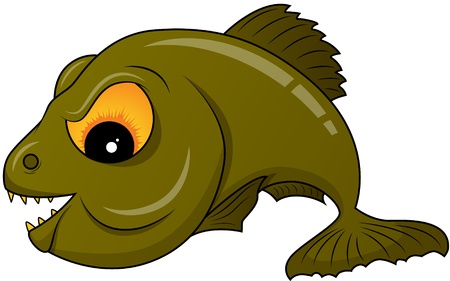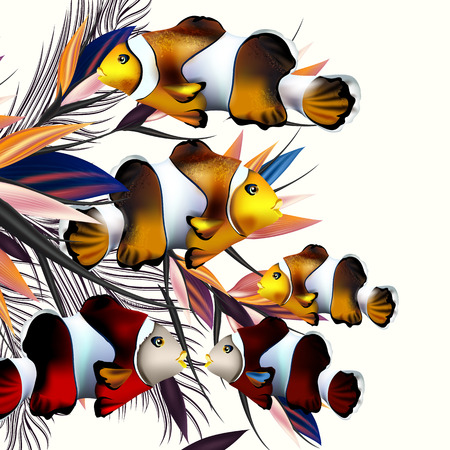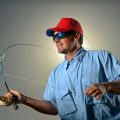1. Understanding Deep-Water Crappie Habits
If you’re ready to up your crappie game, it all starts with getting to know these fish and their deep-water patterns. Crappie aren’t just randomly swimming around—they follow the seasons, water temps, and food sources, especially when they hang out in deeper water. Let’s break down what makes them tick so you can put your jig right where it counts.
Crappie Movements Through the Seasons
| Season | Water Depth | Typical Behavior |
|---|---|---|
| Spring | Shallow to mid-depth (5-15 ft) | Move towards shallows for spawning, but bigger fish may stay a bit deeper |
| Summer | Deeper (15-30+ ft) | Seek cooler, more stable temps; often suspend near structure or drop-offs |
| Fall | Mid-depth to deeper (10-25 ft) | Follow baitfish schools, prepping for winter; stick close to cover |
| Winter | The deepest areas (20-40+ ft) | Bunch up tight in deep basins or channels; slow metabolism, less active but still catchable |
Main Habitats in Deep Water
When you’re looking for crappie down deep, don’t just drift aimlessly—focus on spots that offer both cover and easy access to food. Here are a few favorite crappie haunts worth checking out:
- Submerged Timber: Old trees or stumps are like underwater condos for crappie—plenty of shelter and ambush points.
- Brush Piles: Whether natural or man-made, brush piles attract both baitfish and hungry crappie.
- Ledges & Drop-offs: These underwater “cliffs” let crappie move up or down quickly depending on conditions.
- Deep Creek Channels: Crappie love hanging along old creek beds at the bottom of lakes.
- Docks with Deep Water Access: Not just a summer thing—docks over deep water can hold fish year-round.
Why Habitat Matters for Jigging Success
Understanding where crappie like to be is key to picking the right jigging approach. When you know their seasonal moves and preferred hideouts, you’ll waste less time searching and spend more time catching. In the next section, we’ll dive into how to fine-tune your jigging setup for these deep-water dwellers.
2. Choosing the Right Gear for the Job
When it comes to advanced jigging for deep-water crappie, having the right gear can make all the difference. Deep water means heavier jigs, more line out, and a need for sensitivity to feel even the lightest bites. Here’s a simple breakdown of what American anglers reach for when they head out to target those slab crappie down deep.
Rods: Sensitivity Meets Strength
For deep-water jigging, you’ll want a rod that’s long enough to manage line control but sensitive enough to detect subtle takes. Most folks prefer rods in the 66″ to 8 range, with medium-light power and fast action tips. Brands like B’n’M, Lew’s, and St. Croix are popular choices on lakes from Texas to Minnesota. Look for rods labeled as “jigging” or “crappie series” to get the right mix of backbone and flexibility.
Recommended Rod Features
| Length | Power | Action | Popular Brands |
|---|---|---|---|
| 66″ – 8 | Medium-Light | Fast | B’n’M, Lew’s, St. Croix |
Reels: Smooth and Steady Wins the Race
A smooth drag is key when fighting big crappie in deep water, especially if you hook into something unexpected. Most anglers go with spinning reels in the 1000-2000 size range because they’re light and balance well with longer jigging rods. Daiwa, Shimano, and Pflueger reels are often seen at boat ramps across America thanks to their reliability and buttery-smooth retrieve.
Top Reel Picks for Deep-Water Jigging
| Size | Main Feature | Popular Brands/Models |
|---|---|---|
| 1000-2000 | Smooth Drag & Lightweight | Daiwa Revros LT, Shimano Sedona, Pflueger President |
Line Choices: Feel Every Tick Down Deep
The right line can help you stay connected with your jig—and that next big crappie. Many experienced anglers go for braided line (6-10 lb test) as their mainline due to its zero stretch and high sensitivity. A short fluorocarbon leader (about 18-24 inches of 6-8 lb test) helps keep your presentation stealthy in clear water. Sufix, PowerPro, and Seaguar lines are all solid picks widely used across U.S. crappie country.
Mainline vs Leader Setup Table
| Mainline Type/Test | Leader Type/Test | Notes/Brands |
|---|---|---|
| Braid (6-10 lb) | Fluorocarbon (6-8 lb) | Sufix 832, PowerPro / Seaguar InvizX Leader |
Tackle Tip:
If you’re just getting started with deep-water jigging, don’t overthink it—focus on matching your setup to your local waters and comfort level. American anglers swear by keeping things simple but effective: a balanced rod-and-reel combo spooled up with braid and a touch of fluoro leader will help you feel every nibble down where the big ones roam.

3. Selecting Jigs: Size, Color, and Presentation
Understanding Jig Size for Deep-Water Crappie
When it comes to deep-water crappie fishing, picking the right jig size is key. Crappie can be picky, especially when theyre holding 20 feet down or deeper. In most American lakes, jig heads from 1/8 oz to 1/4 oz work best for getting your bait down quickly while still giving you good feel and control. If the bite is light or the water is extra clear, dropping down to a 1/16 oz head can help, but youll need more patience waiting for it to reach those deep fish.
| Water Depth | Suggested Jig Head Weight |
|---|---|
| 10-15 ft | 1/16 oz – 1/8 oz |
| 15-25 ft | 1/8 oz – 3/16 oz |
| 25+ ft | 3/16 oz – 1/4 oz |
Choosing Colors: Match the Hatch or Stand Out?
The best jig color depends on two things: water clarity and what local baitfish are around. In stained or muddy water—like after a Midwest thunderstorm—bright chartreuse, pinks, or whites can really get noticed by crappie. If you’re fishing in clear reservoirs out West or on big Southern impoundments, more natural colors like shad gray, blue ice, or silver are usually better because they look like real minnows swimming by.
| Water Clarity | Best Jig Colors |
|---|---|
| Clear | Natural (shad, silver, blue ice) |
| Slightly Stained | Pearl white, monkey milk, gold flake |
| Muddy/Stained | Chartreuse, pink, orange, black/chartreuse combo |
Tip:
If you see shad flipping on the surface or find small minnows in your livewell after netting some crappie, try to match their color and size with your jig body. Around Texas lakes in spring, for example, a silver body with a hint of chartreuse tail often does the trick.
The Art of Presentation: How You Work the Jig Matters
Dropping your jig straight down into brush piles or along ledges? Use a tight line and give subtle twitches—crappie love an easy meal that looks alive but not spooked. When fish are suspended off points or over submerged timber, slowly swimming your jig horizontally through their zone can trigger strikes from bigger slabs. Adjust your retrieve speed and rod tip action until you find what gets bites that day. Some days they want it dead-still; other days they’ll chase a moving target.
Real-World Example:
On Lake Guntersville last fall, anglers noticed crappie were ignoring fast-moving jigs but would inhale a lightly shaken minnow-colored tube if left nearly motionless over brush at 18 feet deep. Pay attention to what works—sometimes less movement equals more fish!
4. Mastering Vertical Jigging Techniques
Understanding Advanced Vertical Jigging
Vertical jigging is a go-to method when you’re hunting for deep-water crappie, especially when the fish are holding tight to structure or suspended in open water. This technique is all about presenting your bait right in front of the fish and keeping it in the strike zone as long as possible. Let’s break down how to master advanced vertical jigging techniques that’ll help you catch even those finicky or pressured crappie.
Boat Control: The Foundation of Successful Jigging
Good boat control is crucial for precise vertical jigging. You want your boat positioned so you can drop your jig straight down without swinging away from your target spot. Use your trolling motor or anchor lock system to keep yourself steady over brush piles, ledges, or submerged trees. In windy conditions, try to point the bow into the wind and make small adjustments with your trolling motor to stay on top of the fish.
| Boat Control Tips | Why It Matters |
|---|---|
| Use anchor lock or spot lock features | Keeps you positioned directly over fish-holding structure |
| Face the bow into the wind | Reduces boat drift and allows for better lure presentation |
| Make small, controlled movements with your trolling motor | Helps maintain position without spooking crappie below |
Drop Speed: Getting Your Jig Into the Strike Zone Fast (But Not Too Fast)
The way you drop your jig makes a difference, especially when fish are picky. A fast drop can get your bait down quickly, but sometimes a slow fall is what triggers a reaction bite. Experiment with letting your jig free-fall versus controlling the descent with your rod tip or by feathering the line with your fingers. Watch your line closely—crappie often hit on the fall!
Drop Speed Tips:
- Fast Drop: Use when crappie are aggressive or suspended deep.
- Slow Drop: Ideal for pressured fish or when they’re hugging cover tightly.
- Feather the Line: Stop the jig at different depths to check for suspended crappie.
Subtle Rod Actions: Finesse Is Key
You don’t need big rod sweeps to catch deep-water crappie—in fact, less is often more. Try soft twitches, tiny shakes, or just holding the jig still with an occasional little lift. Sometimes just quivering your rod tip will get even stubborn crappie to bite. Pay attention to what works that day; crappie preferences can change with water temp, weather, and pressure.
| Rod Action | When to Use It | Description |
|---|---|---|
| Tiny twitches | Tough bite days | Barely move the rod tip—just enough to pulse the jig in place. |
| Straight hold & occasional lift | Suspended crappie/clear water | Let the jig sit still and lift it gently every few seconds. |
| Lively shakes/pops | Aggressive feeding times/cloudy water | Add more action if fish seem fired up and willing to chase. |
The Bottom Line on Vertical Jigging for Deep-Water Crappie
If you want to catch more deep-water crappie, focus on boat control first, then fine-tune your drop speed and experiment with subtle rod actions until you find what triggers bites. Each day on the water can be different—don’t be afraid to mix things up until you dial in what those slabs want!
5. Utilizing Electronics for Precision
When it comes to advanced jigging techniques for deep-water crappie, using electronics like fish finders and sonar can make all the difference. Instead of guessing where those big schools are hiding, you can zero in on them and spend more time catching instead of searching. Let’s dive into how modern anglers use these high-tech tools, and see how they play out on some classic American lakes.
Why Use Electronics?
Crappie love structure—think sunken brush piles, drop-offs, or submerged timber. In deeper water, spotting these hotspots with your naked eye just isn’t possible. That’s where electronics come in. A good fish finder not only shows you depth but helps you pinpoint where crappie are schooling, especially when they’re holding at specific depths in places like Kentucky Lake, Lake Okeechobee, or Lake of the Ozarks.
Types of Electronics for Crappie Fishing
| Device Type | Main Use | Popular Models |
|---|---|---|
| Traditional Sonar | Shows basic bottom contour and fish arches | Lowrance HOOK Reveal, Garmin Striker Plus |
| Down Imaging | Gives detailed images directly beneath the boat | Humminbird Helix, Garmin Echomap UHD |
| Side Imaging | Scans large areas to the left and right of your boat | Humminbird Solix, Lowrance HDS Live |
| Live Sonar (Forward Facing) | Real-time movement of fish and your jig | Garmin LiveScope, Lowrance ActiveTarget |
How to Read Your Fish Finder for Crappie
- Look for Bait Balls: Schools of baitfish often appear as cloud-like clusters. Crappie will usually be close by.
- ID Structure: Brush piles or sunken trees show up as dense shapes—prime crappie spots!
- Spot the Arches: Individual crappie might look like small arches or dots near structure or bait clouds.
- Depth Tracking: Adjust your jigging depth based on where you see fish on the screen—if they’re holding at 18 feet, that’s where your jig should be.
Practical Tips on American Lakes
- Kentucky Lake (TN/KY): Use side imaging to scan for submerged stumps along creek channels—big schools gather here in late summer.
- Lake Okeechobee (FL): Down imaging is perfect for picking out isolated brush piles in open water where crappie suspend during winter months.
- Lake of the Ozarks (MO): Forward-facing sonar helps track roaming crappie schools around dock pilings and main lake points.
Troubleshooting Common Issues
| Problem | Possible Cause | Quick Fixes |
|---|---|---|
| No Fish Detected | Sensitivity too low; not over structure/fish; transducer misaligned | Bump up sensitivity; move to different spot; check mounting angle |
| Poor Image Quality | Turbid water; interference from trolling motor; dirty transducer | Clean transducer; adjust frequency settings; separate power sources if possible |
| Difficult Depth Reading | Silt/mud bottom; shallow water mode off | Select correct depth range; switch to higher frequency in shallow zones |
A Little Local Know-How Goes a Long Way!
If you’re new to using electronics for deep-water crappie fishing, don’t stress! Start with auto settings on your device and slowly tweak things as you get comfortable. Most importantly, pay attention to what works best on your home lake—it could be totally different from somewhere else. With a bit of practice, these modern tools will become just another part of your natural fishing rhythm.
6. Reading the Bite and Making Adjustments
When you’re jigging for crappie in deep water, sometimes the bite can be so light you barely notice it. Crappie are known for their “soft mouth,” and when they’re holding down deep, bites can feel like nothing more than a gentle tap or a bit of extra weight on your line. Here’s how to read those subtle strikes and adjust your technique when things get tricky.
Understanding Subtle Strikes
Crappie don’t always slam the bait. Especially in deeper, cooler water, they might just inhale your jig and sit still. If your line twitches, slackens, or just feels “different,” set the hook! Watch your line closely where it enters the water—sometimes a bite shows up as a slight sideways movement or a barely-there bounce.
Signs You’ve Got a Bite
| Sign | What It Means |
|---|---|
| Slight twitch in the line | A crappie may have mouthed your jig |
| Line goes slack suddenly | Fish swam up with the bait |
| Extra heaviness or resistance | Crappie is just holding the bait |
| Visual “tick” at rod tip | Bite is very light but present |
Tweaking Your Jigging Approach When Bites Slow Down
If you’re not getting bites or if crappie seem finicky, don’t be afraid to experiment. Try slowing down your jigging motion—crappie often prefer a slower presentation in deep water. Switch up jig colors or downsize your bait if fish are shying away. Sometimes using a lighter jig head will let your lure hover longer in the strike zone, giving sluggish crappie more time to commit.
Adjustment Strategies for Tough Bites
| Challenge | Tweak to Try |
|---|---|
| No bites or very few strikes | Change jig color or size; try a slower lift-and-drop motion |
| Bites are light and hard to detect | Use a sensitive rod and high-visibility line; keep slack out of your line for better feel |
| Fish follow but don’t commit | Add scent to your lure or use a minnow-tipped jig for extra appeal |
| Bite stops after catching a few fish in one spot | Move to a new depth or location; change up your rhythm or pause longer between jigs |
Pro Tip: Stay Alert!
The best deep-water crappie anglers stay focused and keep their hands on the rod at all times. Even if it’s cold out there on the lake, being ready for that soft bite is what turns slow days into memorable ones.


